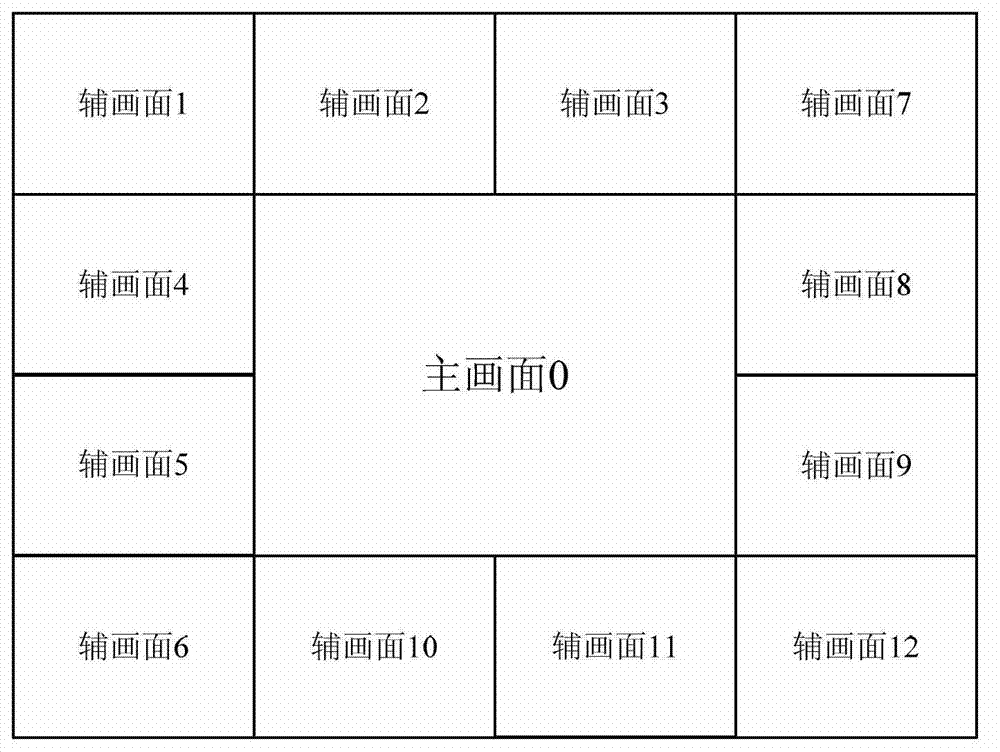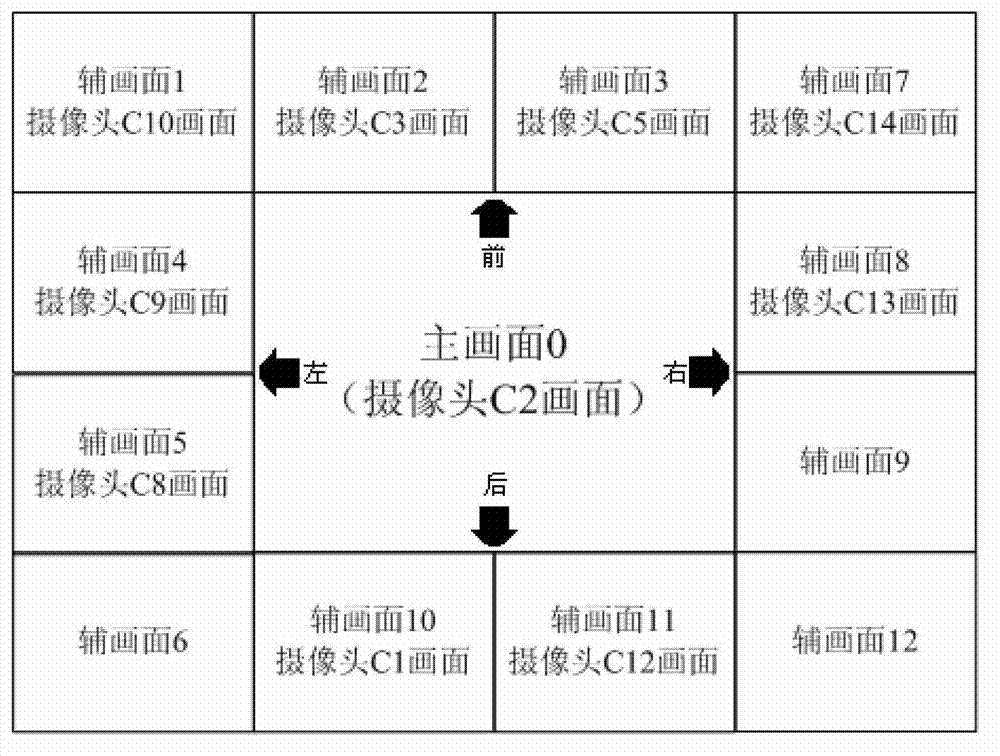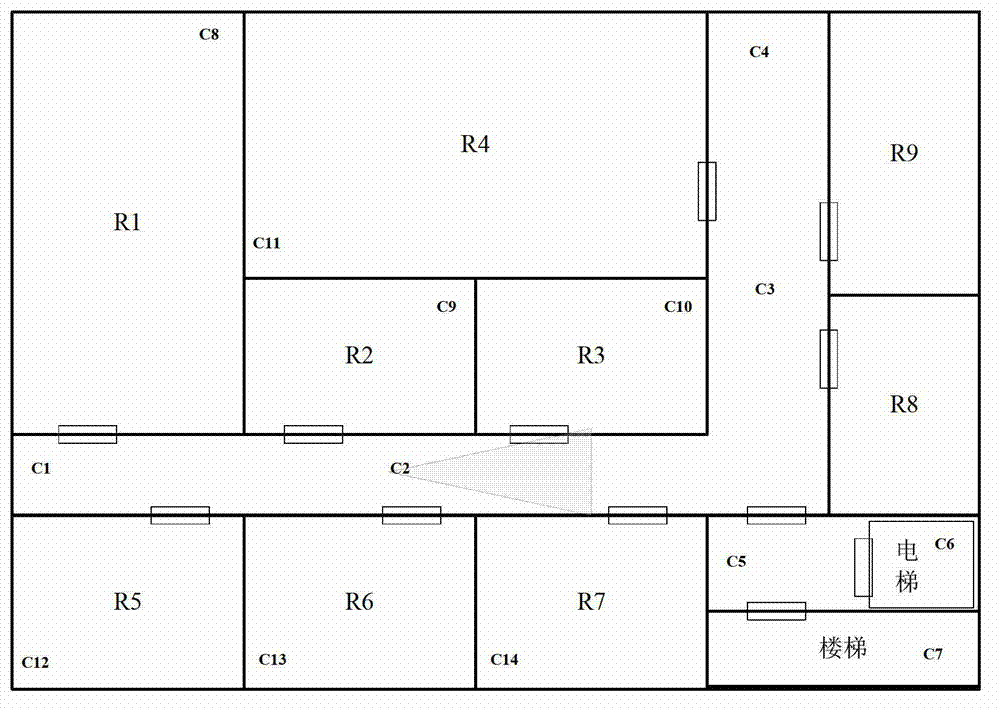Auxiliary method for tracking suspicious people by monitoring system
A monitoring system and auxiliary tracking technology, applied in the direction of closed-circuit television system, digital output to display equipment, etc., to achieve the effects of high tracking accuracy, simple implementation method and fast tracking speed
- Summary
- Abstract
- Description
- Claims
- Application Information
AI Technical Summary
Problems solved by technology
Method used
Image
Examples
Embodiment Construction
[0031] The present invention will be described in detail below in conjunction with the accompanying drawings and embodiments.
[0032] The invention relates to an auxiliary tracking method for suspicious persons in a monitoring system. The idea of the method is: in the monitoring system, on the monitoring seat computer, all accessible monitoring points in the building are modeled to establish a monitoring interface, the interface It is divided into main screen and auxiliary screen. The main screen shows the current location of the monitoring point where the suspicious person is. The screen is switched to this screen, and the auxiliary screen is correspondingly switched to the monitoring screens of all the one-step-reachable monitoring points of this screen. The monitoring personnel can quickly capture the current state of the suspicious person and the possible path of the next step by switching between the main and the auxiliary.
[0033] This method is specifically realize...
PUM
 Login to View More
Login to View More Abstract
Description
Claims
Application Information
 Login to View More
Login to View More - R&D
- Intellectual Property
- Life Sciences
- Materials
- Tech Scout
- Unparalleled Data Quality
- Higher Quality Content
- 60% Fewer Hallucinations
Browse by: Latest US Patents, China's latest patents, Technical Efficacy Thesaurus, Application Domain, Technology Topic, Popular Technical Reports.
© 2025 PatSnap. All rights reserved.Legal|Privacy policy|Modern Slavery Act Transparency Statement|Sitemap|About US| Contact US: help@patsnap.com



